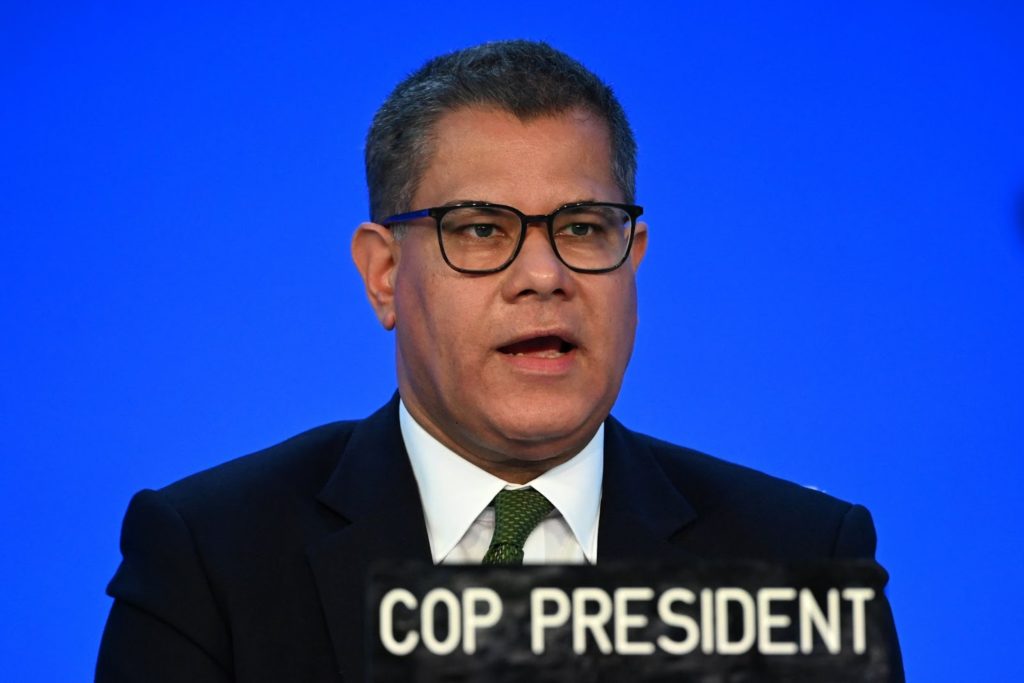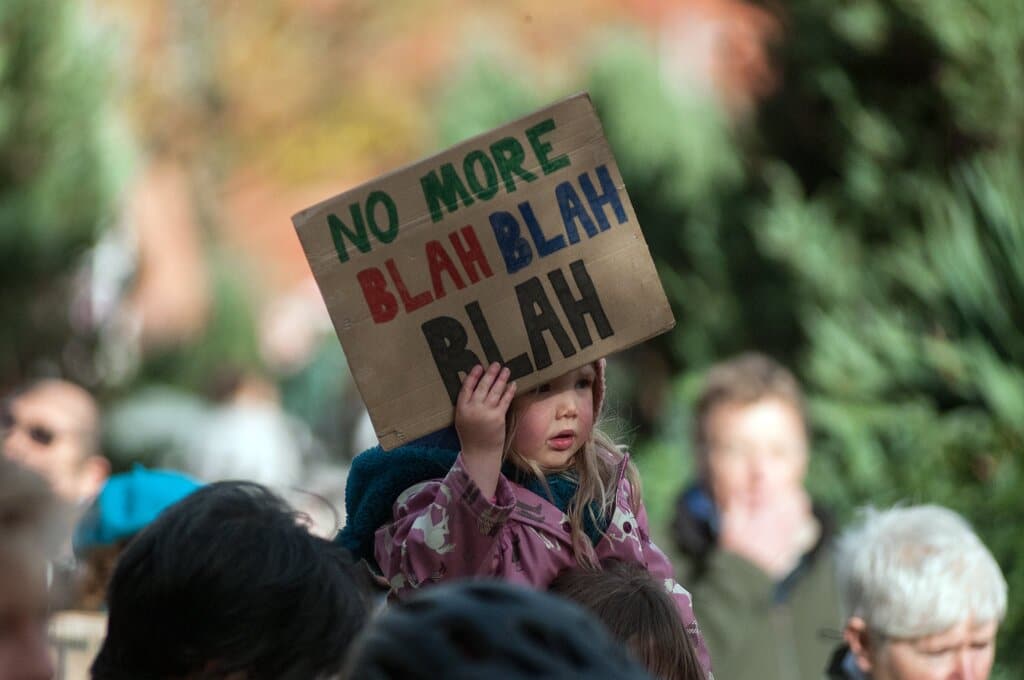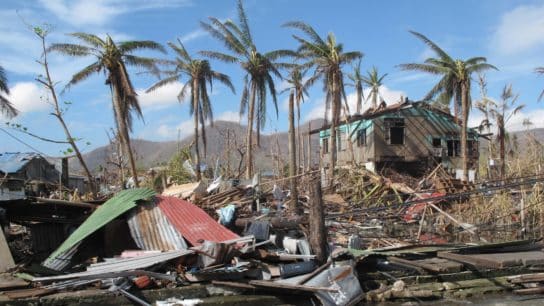The 26th annual UN climate talks, or COP26, concluded this past weekend in Glasgow, Scotland after a postponed deadline for the summit’s conclusion and several sleepless all-nighters for delegates. A deal was struck on Saturday November 13 that reiterates and intensifies global efforts to fight climate change, establishes rules for a global carbon market and urges wealthy nations to commit more money to international climate finance. But despite the positive takeaways, the conference was unable to realise all of its goals. Weighing its successes against its failures, how will the COP26 summit be remembered?
—
COP26: A Recap
The COP26 summit was labelled the most pivotal and influential climate talks in a decade that will in all likelihood prove crucial to reducing global emissions and tackling climate change. As per the terms of the Paris Agreement signed in 2015, world leaders were expected to submit updated ambitions and plans at COP26 to reduce their greenhouse gas emissions, and set out clearer pathways to large-scale emissions reductions by 2030 and net-zero by mid-century. Glasgow essentially intended to put meat on the framework built in Paris.
COP26 took place at a consequential time when many governments were rolling out economic recovery plans as they emerged from the COVID-19 pandemic, with a remarkable window of opportunity to invest in clean energy projects and energy transitions. 2020 was also when the US returned to the global conversation on climate after replacing a climate-denying president with one who promised to put climate at the centre of his agenda. The US’s promise to engage with the rest of the world on climate, even with perennial adversary China, made many hopeful in the buildup to the COP26 summit.
So did its promises bear fruit? Was COP26 the life-saving panacea that the world’s most vulnerable countries needed? Did we just fix climate change?
No, we didn’t. The COP26 summit was a combination of some breakthroughs and, as President for COP26 Alok Sharma put it, ‘deep disappointments.’ The climate summit failed to achieve all its targets, but it did represent some significant progress from the international community – much like every other COP.

Pledges and promises were abound in Glasgow, but we frankly still have no idea if these will translate into actual policies, and perhaps most importantly, whether or not this will happen in time. This has been the story for the entirety of COP’s history, so none of this should come as a surprise.
What the COP26 summit did do positively was to highlight the ways that we can get ourselves out of this climate crisis mess, providing pretty clear and convenient pathways for nations to follow and work together towards common goals, if they are inclined to do so. The pathways are there, and not only do they lead to a better future, they can still be vastly improved upon at future COPs. Even though we still have a long way to go, we also still have time, although vanishingly less of it each time one of these conferences rolls around.
Where Did We Win?
It is important to remember that, at this point, the UN climate conferences are pretty much only intended to amplify, improve and refine the frameworks put in place six years ago at COP21 in Paris. We know what it is we have to do, which is to keep average global temperature rise well below 2C, and ideally below 1.5C. So from here on out, COP summits are forums to create better rules, establish monitoring and verification procedures, clarify who should be financing how much in global adaptation to climate change and periodically update emissions reduction targets. COP is a periodic magnifying lens that shows the world how different countries are doing. By this metric, COP26 was more or less successful, although not to the extent that many had hoped for.
The COP26 summit started off with an auspicious bang. On November 1, Day 1 of the COP summit, India announced an unexpected and highly consequential 2070 net-zero emissions target, surprising many who had viewed India as a stubborn outlier in the net-zero announcements game that has taken place over the past year.
On Day 2, 105 countries signed on to the Global Methane Pledge to collectively reduce methane emissions 30% by 2030, a target that, if successful, would curb global warming by at least 0.2C by 2050. On the same day, over one hundred countries backed a declaration to halt and reverse deforestation by 2030, including Brazil, where the government has long been unapologetic about its destructive presence in the Amazon.
Day 4 saw a much-needed announcement by 40 countries pledging to phase out coal use, the dirtiest fossil fuel, although the US, China, India and Australia were notably absent from this pledge. The announcement prompted Sharma to triumphantly declare that, “the end of coal is in sight.”
Rules were put in place to finally resolve Article 6 of the Paris Agreement, a framework for a global carbon market that has been six years in the making. While some activists have called the rules not restrictive enough, a global carbon market is the first step towards unlocking trillions of dollars worth of investments into clean energy, green technologies and financing resilience and adaptation measures in the developing world. It will also help regulate the growing voluntary carbon offset market, which if left untamed, would become a much bigger problem.
The private sector also stepped up in a noteworthy way, and although the feasibility of the UK’s former central banker Mark Carney’s plan to decarbonise USD$130 trillion in assets across the world is debatable, it is undeniable that the financial sector is looking to move away from carbon. Some of the largest financial institutions and asset managers in the world have taken tangible action, often more so than governments, in committing funds to decarbonisation and energy transitions. BlackRock – the largest asset manager in the world – announced on Day 2 that it had raised $673 million to finance projects tackling climate change in emerging markets worldwide.
Combined, these measures would take us to 1.8C of warming this century. This is of course contingent on countries actually delivering on their promises, and even the new projection is above the 1.5C target set out in the Paris Agreement, and would condemn many of the world’s most vulnerable countries to uninhabitability, but is a far better trajectory than the 2.7C of warming we had before the COP26 summit kicked off.
You might also like: Climate Debt and Justice: How Much Do We Really Owe?
Where Did We Lose?
These are all great targets to have, but at the moment they are just that: targets. COP26 kicked off with every major world leader and recognisable political face making grand announcements, pledging that their country will respond to the urgency of the climate crisis. But most world leaders left Glasgow after Day 2, leaving the actual deliberations and accord-making to their ministers, diplomats, technocrats and bored ex-presidents. All the hard work, in other words.
It is easy to make a pledge, with perhaps a well-worded public statement and a photogenic image of leaders shaking hands. It is very different to actually implement the policies that will see that pledge accomplished.
The second half of COP26 was low on attractive policy and pledge announcements, heavy on compromise and overshadowed by a voracious group of activists at the doors of Glasgow’s Scottish Event Campus clamouring for more decisive action. The activists, predominantly young and female and in stark opposition to the old and male average making the decisions on the other side of the door, were unimpressed with the final resolutions of COP26.
Shortly after the conclusion of the talks and the signing of the Glasgow Climate Pact on Saturday, climate activist and sometimes figurehead Greta Thunberg tweeted: “The #COP26 is over. Here’s a brief summary: Blah, blah, blah. But the real work continues outside these halls. And we will never give up, ever.”
Blah, blah, blah. It has become a slogan of sorts for those unimpressed with the credibility of the current slew of climate pledges. Even UK Prime Minister Boris Johnson used it. And Johnson, like Greta and countless others, have good reason to be unimpressed.
On the eve of the Glasgow talks’ conclusion, everything seemed to be aligned perfectly. Agreements had been struck and delegates from 197 countries seemed happy. Everyone was getting ready to board their flights and return home, content that best efforts had been made to put the world on a legitimate pathway towards ambitious emissions reduction goals.
It didn’t last long.
Last-minute objections by China and India forced Alok Sharma to revise the pact’s draft in small but important ways. Instead of an agreement to fully ‘phase out’ coal, we were left with a discouragingly vague goal to ‘phase down’ the fossil fuel, gradually lessening our dependence on it but stopping well short of cutting it out of our lives entirely. The current plan to phase down coal does not incorporate any concrete deadline, and does not include any specific enforcing mechanism to hold countries accountable.
Objections to the final draft also requested scaling back ambitions on eliminating fossil fuel subsidies, and expressed disagreement over the language used, with India stating that the draft “lacked balance.”
The murmurs of dissent had been brewing all week. Indonesia, the fifth largest emitter in the world, unexpectedly rescinded its commitment to Day 2’s anti-deforestation pledge, calling it “unfair.” Similarly, many of the pledges agreed upon at the summit remain purposefully vague, open to interpretation and lacking deadlines, enforcement mechanisms or both.
When China and India expressed their dissent, the representatives of several low-lying island nations, whose residents are responsible for a minute fraction of global emissions over time and yet stand on the front lines of climate catastrophe, were not happy. But despite objections, anger and tension, every country agreed to the objections and dutifully revised the package. One by one, the world’s most vulnerable nations agreed to a scaled-back, watered-down version of the pact.
A compromise was reached, and a deal was signed. For many, this was a sign of progress. “Glasgow has delivered a strong message of hope,” Seve Paeniu, climate envoy for Tuvalu commented on Saturday. As he held his phone with a picture of his grandchildren in the air, he continued: “I will now be able to tell them that Glasgow has made a promise to secure them their future.”
Not everyone was as optimistic. Alok Sharma, the organiser of the event who has spent months travelling across the globe knocking our preliminary deals and smoothing out tensions, felt the need to apologise at the conclusion of the talks. “I am deeply sorry. I understand the deep disappointment,” Sharma said in an emotional moment, taking a second to regain his composure before concluding: “but as you have noted, it is also vital that we protect this package.”
The agreement reached at the conclusion of COP26 is not ideal, but it is progress. And after all of it, the goal remains the same as it did two weeks ago. Now, it is imperative to enact the policies that can make pledges a reality, and continue ratcheting up the world’s ambitions.
Our Climate Outlook
Our new climate outlook is the same as our old one: to meet the Paris Agreement goals. How do we ensure that the next year (or five, or ten), are not more blah, blah, blah? This is the big question countries will have to face in the coming months and beyond.
A disconcerting aspect about COP26 was the sheer number of announcements and updated pledges that were delayed to COP27, to be held November 2022 in Sharm El Sheikh, Egypt. India was the only major emitter to produce a revised commitment to reduce emissions at COP26, despite the Paris Agreement calling for revised pledges to be submitted in Glasgow. In light of this, revised pledges will be discussed extensively next year and in 2023.
Starting in 2022, it is expected that countries will finally be able to pay up the promised $100 billion in international climate finance a year to accelerate the developing world’s transition to decarbonised economies and adaptation to climate change. This commitment will go a long way towards paying off the industrialised world’s climate debt, and if the international carbon market agreed upon at COP26 proves successful, even more aid money could be unlocked.
The COP26 summit has paved a roadmap towards more concerted and ambitious plans to be announced next year. That may sound discouraging, like kicking a can slightly further down the road while the road is literally melting, but it doesn’t have to be, since committed countries can spend more time leveraging their neighbours to be more ambitious. “COP27 starts now,” UN Secretary General António Guterres said in his closing remarks.
But while ramping up ambition over the next year is all well and good, it must be acknowledged that time is running out to take the most difficult measures to tackle climate change. The methane pledge reduction target, for instance, was not a difficult deal to get over the line. Unlike carbon dioxide, which needs to be released into the atmosphere in order to have any economic benefit, methane leaks are unintentional and count as a loss in owners’ books. Additionally, there is a thriving market to be had around capturing methane leaks, as the gas can then be easily resold for a profit.
To be clear, we need to reduce our methane emissions, which can be over 80 times more potent than CO2 over a 20-year timescale, but it is also the low-hanging fruit of the climate crisis. It is definitely an important part of our response, but does not really require much of a sacrifice on our end. Phasing out fossil fuels, consigning coal to history, eliminating inefficient subsidies and paying off our climate debt to the world’s most vulnerable regions are the hardest and most important steps to take.
All these challenges, these existential threats, will require coordinated action to handle. The only way to make the voluntary mechanisms we have in place now work is enforcement through accountability. Knowing your country isn’t doing enough while your rival is meeting expectations will help ratchet up international ambitions. And if the global carbon market concept develops, along with more unilateral approaches such as the EU’s carbon border adjustment tax and a similar scheme proposed in the US, then we might see a clear financial incentive emerge to treat carbon as an undesirable asset as long as it is in the atmosphere, so that removing it will actually turn a profit.
The arguable surprise of the conference was the joint US-China announcement that both countries would work together to reduce emissions over the next ten years in line with the 1.5C temperature rise goal. The joint statement addressed climate change as an ‘existential threat,’ underlining the severity of the crisis. US-China relations are at a historical low point, but if climate is enough to bring both to the table, perhaps successful climate diplomacy is not such a far-fetched idea after all.
So, was COP26 a failure? It was definitely less than what many had hoped for, but it probably did its job. We were never going to fix the climate in Glasgow but we have better roadmaps now, targets more conducive to more ambitious goals and perhaps most importantly, a world more or less united in the belief that we need to tackle this problem, and we need to do it soon. Like Greta said, the real changes were never going to happen in the halls of COP, but that does not diminish the fact that these summits are an important part of that process.
Featured image by: Tim Dennell/Flickr














